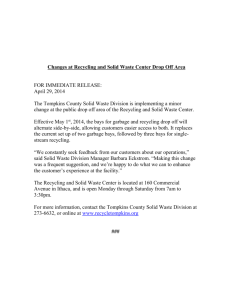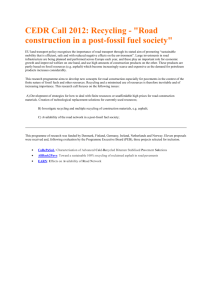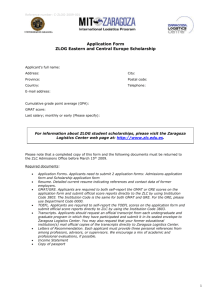11 More GM Facilities Become Landfill-Free - GM Media
advertisement
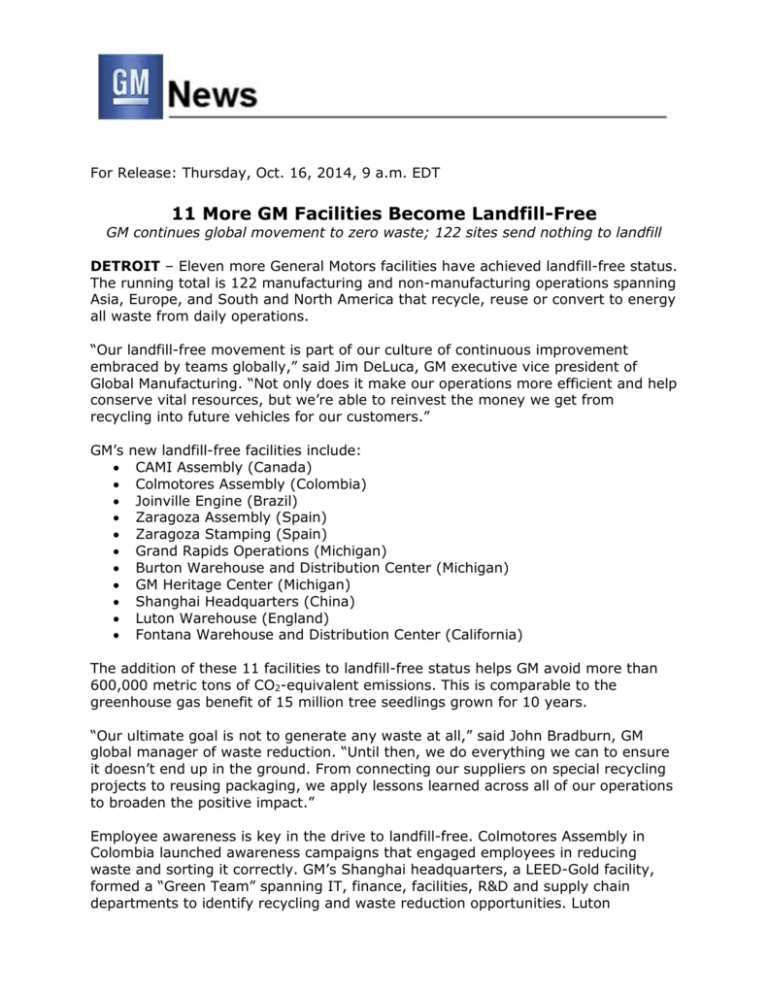
For Release: Thursday, Oct. 16, 2014, 9 a.m. EDT 11 More GM Facilities Become Landfill-Free GM continues global movement to zero waste; 122 sites send nothing to landfill DETROIT – Eleven more General Motors facilities have achieved landfill-free status. The running total is 122 manufacturing and non-manufacturing operations spanning Asia, Europe, and South and North America that recycle, reuse or convert to energy all waste from daily operations. “Our landfill-free movement is part of our culture of continuous improvement embraced by teams globally,” said Jim DeLuca, GM executive vice president of Global Manufacturing. “Not only does it make our operations more efficient and help conserve vital resources, but we’re able to reinvest the money we get from recycling into future vehicles for our customers.” GM’s new landfill-free facilities include: CAMI Assembly (Canada) Colmotores Assembly (Colombia) Joinville Engine (Brazil) Zaragoza Assembly (Spain) Zaragoza Stamping (Spain) Grand Rapids Operations (Michigan) Burton Warehouse and Distribution Center (Michigan) GM Heritage Center (Michigan) Shanghai Headquarters (China) Luton Warehouse (England) Fontana Warehouse and Distribution Center (California) The addition of these 11 facilities to landfill-free status helps GM avoid more than 600,000 metric tons of CO2-equivalent emissions. This is comparable to the greenhouse gas benefit of 15 million tree seedlings grown for 10 years. “Our ultimate goal is not to generate any waste at all,” said John Bradburn, GM global manager of waste reduction. “Until then, we do everything we can to ensure it doesn’t end up in the ground. From connecting our suppliers on special recycling projects to reusing packaging, we apply lessons learned across all of our operations to broaden the positive impact.” Employee awareness is key in the drive to landfill-free. Colmotores Assembly in Colombia launched awareness campaigns that engaged employees in reducing waste and sorting it correctly. GM’s Shanghai headquarters, a LEED-Gold facility, formed a “Green Team” spanning IT, finance, facilities, R&D and supply chain departments to identify recycling and waste reduction opportunities. Luton Warehouse attributes its success to a robust training initiative that drove a zerowaste culture. All of these facilities treat their waste as resources out of place and employ a number of methods to give them a second or third life. Reduce: Zaragoza Assembly changed its manufacturing process to reduce solvent consumption from its paint shop; it now reuses 80 percent of it. Packaging continues to be a large waste stream for many plants and CAMI Assembly is tackling it by setting aggressive targets to reduce non-reusable packaging. Reuse: Grand Rapids Operations’ in-house oil recycling saves GM $1.2 million per year. It recycles and reuses every gallon of oil it buys from a refinery several times. Recycle: CAMI Assembly turns scrap wood into mulch for its wetlands and Grand Rapids Operations recycles grinding wheels as sandpaper. The Grand Rapids site also works with a partner that processes wastewater treatment sludge into a fuel source for the building materials industry. Compost: Zaragoza composts wastewater treatment sludge to create fertilizer and Joinville Engine composts its organic cafeteria waste to provide additional nutrients for the site’s trees and plants. A strong network of recycling partners and suppliers helps facilities achieve their goals. Localizing the supply chain strengthens the business case and reduces overall carbon footprint. One of Zaragoza’s biggest challenges was finding a nearby partner to efficiently transport and treat paint sludge so it could be used to generate electricity. Burton Warehouse and Distribution Center hired a waste technician to help sort packaging waste generated from expanded shipping and distribution operations. A new recycling partner helped push GM’s Heritage Center to landfill-free status. Landfill-free has no finish line. For example, Colmotores Assembly set a goal to work with suppliers on minimizing packaging waste and designing products for easier reuse or recycling. GM’s goal is to achieve 125 landfill-free sites globally by 2020. The company already has met its 10 percent total waste reduction commitment – seven years ahead of schedule. GM was named a Michigan Green Leader and Green Corporate Citizen for its landfill-free program, and received a Top Project of the Year Award from Environmental Leader for driving a global movement for zero waste. GM was one of the first companies – and the only automaker – inducted into the U.S. EPA WasteWise Hall of Fame. The company’s blueprint, "The Business Case for Zero Waste”, outlines how companies of all sizes and industries can reduce waste and create efficiencies. For more information on GM’s environmental commitment, visit its sustainability report and environmental blog. General Motors Co. (NYSE:GM, TSX: GMM) and its partners produce vehicles in 30 countries, and the company has leadership positions in the world's largest and fastestgrowing automotive markets. GM, its subsidiaries and joint venture entities sell vehicles under the Chevrolet, Cadillac, Baojun, Buick, GMC, Holden, Jiefang, Opel, Vauxhall and Wuling brands. More information on the company and its subsidiaries, including OnStar, a global leader in vehicle safety, security and information services, can be found at http://www.gm.com. ###
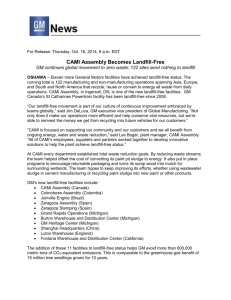

![School [recycling, compost, or waste reduction] case study](http://s3.studylib.net/store/data/005898792_1-08f8f34cac7a57869e865e0c3646f10a-300x300.png)





